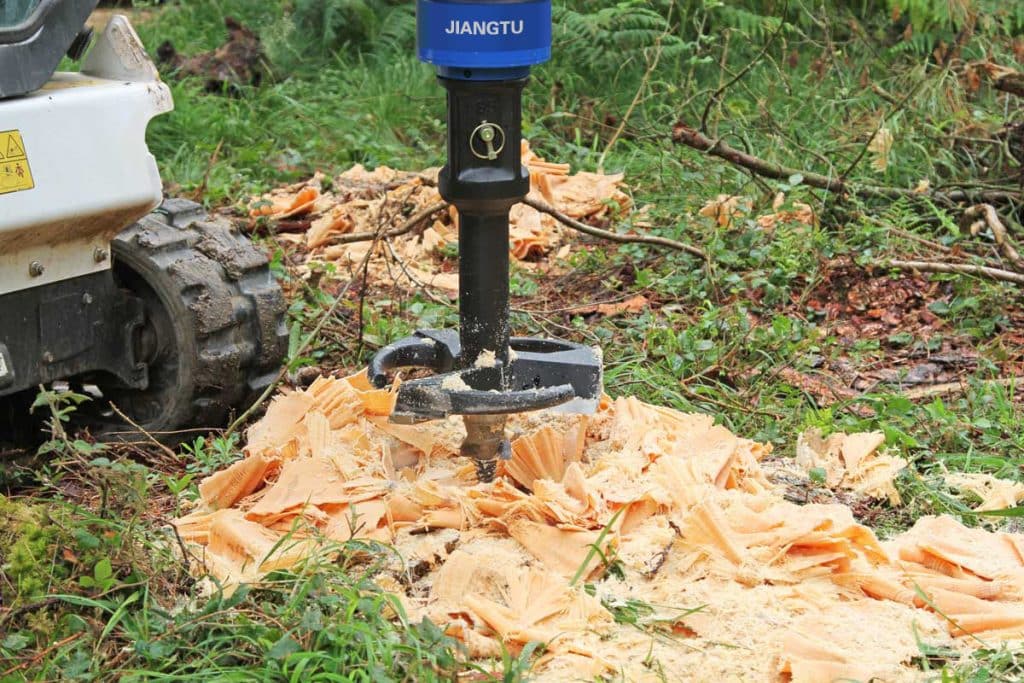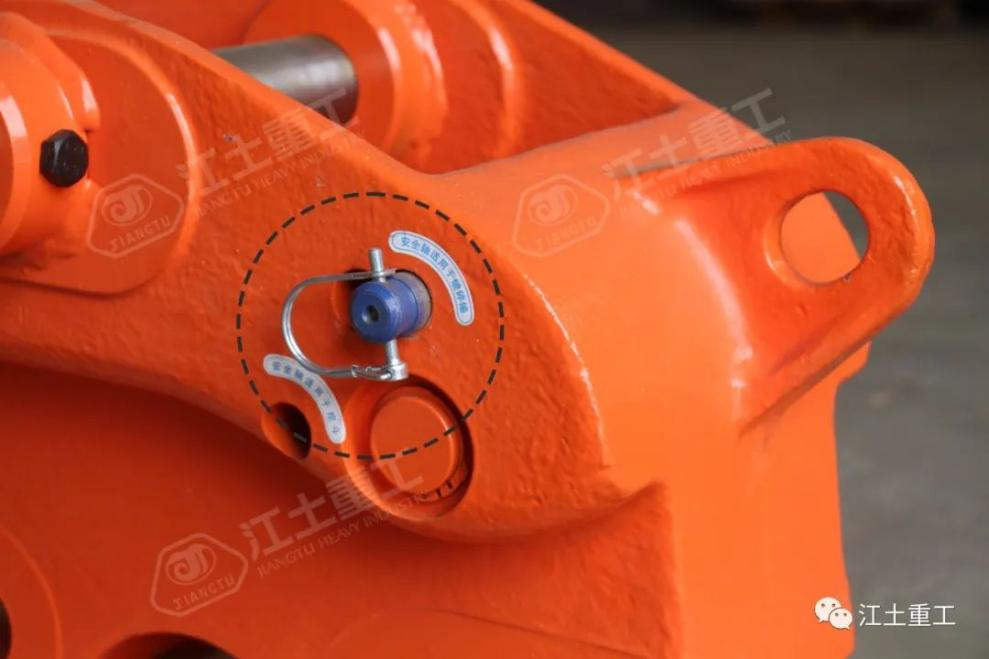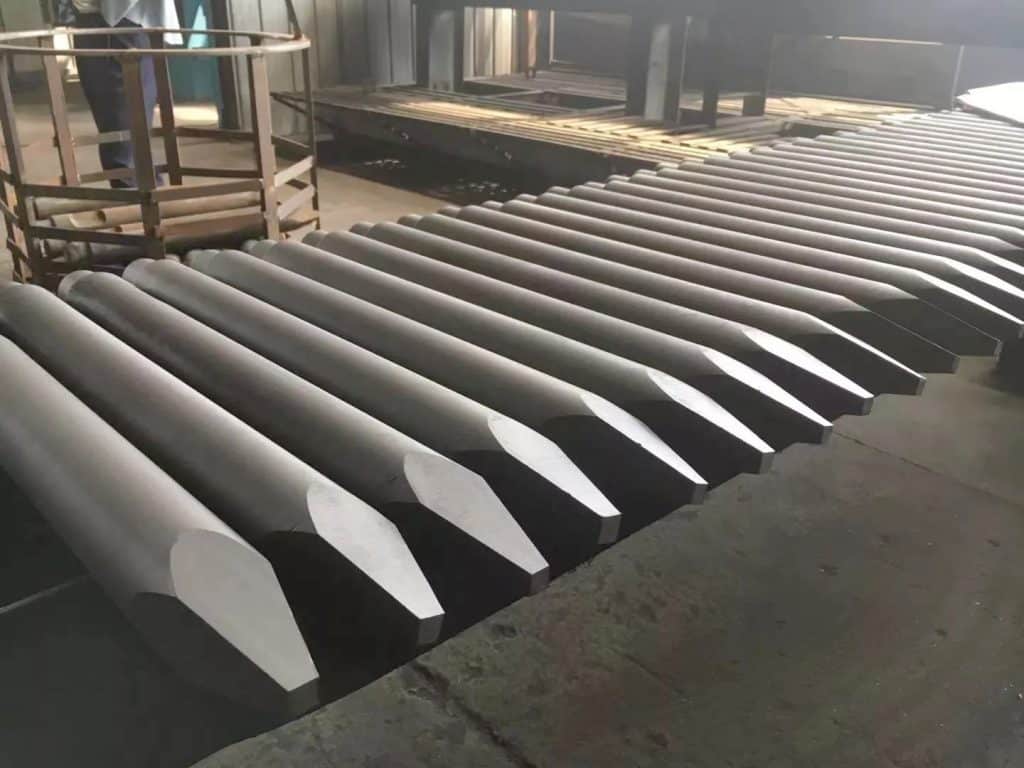Introduction
In the realm of excavation and land clearing, the efficiency of stump removal is paramount. The selection of an appropriate stump planer for your excavator is not just about enhancing productivity; it’s a decision that significantly impacts operational efficiency and cost-effectiveness.
This comprehensive guide aims to navigate you through the intricate process of selecting a stump planer that aligns perfectly with your excavator’s capabilities and the specific demands of your projects.
What Are Stump Planers?
Stump planers, sophisticated attachments designed for excavators, are engineered to remove stumps swiftly and cleanly. Unlike traditional methods that involve digging around the stump or using chemicals, stump planers offer a more direct and environmentally friendly approach. These devices attach to the arm of an excavator and use a combination of rotational force and sharp blades to grind down stumps into chips, which can then be easily removed or left to decompose.
Types of Stump Planers
Stump planers come in various designs, each tailored to different operational needs. The most common types are vertical and horizontal planes.
Vertical stump planers are efficient in pulverizing stumps directly from above, making them ideal for clear-cutting areas with numerous stumps. Horizontal planers, on the other hand, are preferable for precision work, allowing operators to approach a stump from various angles.
Benefits of Using Stump Planers with Excavators
The integration of stump planers with excavators brings numerous advantages. It not only expedites the stump removal process but also minimizes the impact on the surrounding area, preserving soil integrity. Moreover, it negates the need for multiple machines on-site, thus reducing operational costs and environmental footprint.
Size and Power of Your Excavator
The primary step in choosing a stump planer is understanding your excavator’s capabilities. Parameters such as the machine’s weight, engine power (measured in horsepower or HP), and hydraulic flow capacity (liters per minute or LPM) are crucial. For instance, a stump planer that is too large for a compact excavator may hinder its performance, while a small planer on a large excavator might be underutilized.
Hydraulic System Requirements
Stump planers are powered by the excavator’s hydraulic system. Thus, knowing the hydraulic pressure (measured in pounds per square inch or PSI) and flow rate is vital. The right combination ensures that the stump planer operates at peak efficiency without overwhelming the excavator’s hydraulic system.
Excavator Compatibility
The compatibility of the stump planer with your excavator model is another critical factor. This involves not only the physical attachment mechanism but also the balance and handling of the equipment when the planer is in use. It’s essential to consult with manufacturers or dealers to ensure compatibility.
| Excavator Specification | Importance | Example Values |
|---|---|---|
| Weight | Ensures balance and stability | 10-15 tons |
| Engine Power (HP) | Determines operational capacity | 70-150 HP |
| Hydraulic Flow (LPM) | Influences planer speed and efficiency | 60-200 LPM |
| Hydraulic Pressure (PSI) | Affects power transmission to the planer | 2,000-3,500 PSI |
Selecting the Right Stump Planer
Size and Scale of Projects
The nature and scale of your projects dictate the type of stump planer required. For large-scale land clearing, a robust planer capable of handling numerous stumps rapidly is preferable. Conversely, for smaller, more precise tasks, a smaller planer provides better control and maneuverability.
| Model | JTSP250 | JTSP350 |
|---|---|---|
| EXCAVATORS&SKIDSTEERS(TONNES) | 1-5 | 4.5-8 |
| Earth Drill Compatibility | X2500-4500MAX | 5500MAX-8000MAX |
| Diameter(mm) | 250 | 350 |
| Length(mm) | 635 | 675 |
| HubOptions | 65Round&2″Hex | 75Round&2.5″Hex |
| Unit Weight(Kg) | 25 | 33 |
Blade Configuration and Cutting Efficiency
The efficiency of a stump planer is significantly influenced by its blade configuration. Blades designed for coarse cutting are ideal for quickly chewing through large stumps, while finer blades are better suited for detailed work, leaving a smoother finish. The choice depends on the desired outcome and the nature of the subsequent land use.
Durability and Maintenance Needs
The operational life and maintenance requirements of a stump planer are pivotal considerations. Opt for models constructed with high-grade, wear-resistant materials that promise longevity. Additionally, consider the ease of maintenance and availability of replacement parts, as this impacts the overall cost of ownership and operational downtime.
Conclusion
Selecting the right stump planer for your excavator is a decision that blends technical know-how with practical considerations.
By understanding the nuances of stump planers and aligning them with your excavator’s capabilities and project requirements, you can ensure efficient, cost-effective, and environmentally friendly stump removal. With this guide, you’re equipped to make an informed choice that enhances your operational efficiency and contributes to the success of your excavation projects.
Best Stump Planers Manufacturer
JIANGTU Stump Planer is a quick and easy attachment to any Earth Drill for the effective, clean removal of tree stumps of any size. If you need to clear ground in preparation for works or earth drilling there is no better way to remove the remains of trees.
Stump Planers are available in numerous sizes with a range of different hub options for different demands. Quick and easy with minimal mess compared to traditional stump grinding makes this a must-have product for those working in ground preparation and woodland maintenance.














